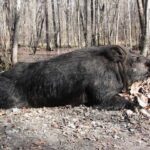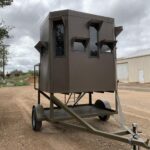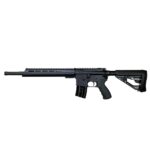Delve into the world of deer feed rice bran, a nutritious and economical ingredient that offers numerous benefits for deer health. From its nutritional composition to optimal inclusion rates, this comprehensive guide explores the use of rice bran in deer feed, providing valuable insights for deer enthusiasts and wildlife managers.
Rice bran, a byproduct of rice milling, is a rich source of essential nutrients that support deer growth, development, and overall well-being. Its high energy content and digestibility make it an ideal addition to deer feed, promoting weight gain and maintaining a healthy body condition.
Nutritional Value of Rice Bran for Deer
Rice bran, a byproduct of rice milling, is a nutritious feed supplement for deer. It offers a rich blend of nutrients, including protein, carbohydrates, fiber, vitamins, and minerals.
Digestibility and Energy Content
Rice bran is highly digestible for deer, making it an efficient source of energy. It contains approximately 16% crude protein and 12% crude fat, providing deer with essential amino acids and fatty acids for growth, reproduction, and overall health.
Enhanced Health Benefits
- Improved Antler Growth:Rice bran contains high levels of phosphorus and calcium, essential for antler development. Studies have shown that deer fed rice bran supplements exhibit increased antler growth and quality.
- Boosted Immune Function:Rice bran is rich in antioxidants, such as vitamin E and gamma-oryzanol, which help strengthen the immune system and protect deer from diseases and infections.
- Improved Body Condition:The high energy content of rice bran helps deer maintain a healthy body weight and condition, especially during periods of stress or nutritional deficiency.
Optimal Inclusion Rates in Deer Feed
Rice bran is a valuable feed ingredient for deer, providing a rich source of energy, protein, and essential nutrients. Determining the optimal inclusion rate in deer feed is crucial to ensure adequate nutrition without compromising animal health or feed efficiency.
Age and Weight Considerations
The recommended inclusion rate of rice bran in deer feed varies depending on the age and weight of the animals. Younger deer and fawns have higher nutritional requirements for growth and development, while mature deer require less energy and protein.
- Fawns and Young Deer:Up to 25% rice bran inclusion is recommended to support rapid growth and development.
- Adult Deer:10-15% rice bran inclusion is generally sufficient to meet maintenance requirements and support overall health.
- Mature Bucks:During the rutting season, bucks may benefit from a slightly higher inclusion rate of 15-20% to provide additional energy for mating activities.
Nutritional Needs
In addition to age and weight, the nutritional needs of deer should also be considered when determining the optimal inclusion rate of rice bran. Deer with specific nutritional deficiencies or health conditions may require adjustments to their diet.
- Protein:Rice bran is a good source of protein, but it may not be sufficient to meet the protein requirements of lactating does or deer with high levels of activity. Additional protein sources may be necessary.
- Energy:Rice bran is a high-energy feed, so it should be used in moderation to prevent obesity or other health issues. Deer with low energy requirements may benefit from a lower inclusion rate.
- Minerals:Rice bran is low in certain minerals, such as calcium and phosphorus. Supplementation with mineral blocks or other sources may be necessary to ensure adequate intake.
Methods of Incorporating Rice Bran into Deer Feed
Rice bran can be incorporated into deer feed in various ways, each with its own advantages and disadvantages. The choice of method depends on the type of feed, the desired inclusion rate, and the available equipment.
Mixing with Other Ingredients
The simplest method is to mix rice bran with other feed ingredients, such as corn, soybeans, or oats. This can be done in a feed mixer or by hand. The advantage of this method is that it is easy and does not require any specialized equipment.
However, it can be difficult to achieve a uniform distribution of rice bran throughout the feed.
Pelleted Feed
Rice bran can also be incorporated into pelleted feed. This is done by mixing rice bran with other feed ingredients and then extruding the mixture through a die to form pellets. The advantage of pelleted feed is that it is easy to handle and store, and it can be fed to deer in a variety of ways.
However, the equipment required to produce pelleted feed is more expensive than that required for mixing feed ingredients.
Extruded Feed
Rice bran can also be incorporated into extruded feed. This is done by mixing rice bran with other feed ingredients and then cooking the mixture under pressure and extruding it through a die to form a variety of shapes, such as flakes, nuggets, or pellets.
The advantage of extruded feed is that it is highly digestible and palatable, and it can be fed to deer in a variety of ways. However, the equipment required to produce extruded feed is more expensive than that required for mixing or pelleting feed.
Economic Considerations

Incorporating rice bran into deer feed has economic implications that need careful consideration. The cost of rice bran, its potential return on investment, and the factors affecting its cost-effectiveness must be evaluated.
Cost Comparison
Rice bran is generally more expensive than traditional deer feed ingredients such as corn and soybeans. However, its nutritional value and potential health benefits may offset the higher cost.
Return on Investment, Deer feed rice bran
The return on investment from using rice bran in deer feed depends on several factors, including the cost of rice bran, the improvement in deer health and performance, and the market value of the deer.
Deer feed on rice bran to get essential nutrients. If you’re interested in learning more about deer, you can check out this brown deer map to find out where they’re located. Rice bran is a good source of protein and energy for deer, and it can help them stay healthy and strong.
Factors Affecting Cost-Effectiveness
The cost-effectiveness of rice bran is influenced by factors such as the availability and price of rice bran in the local market, the inclusion rate in the feed, and the specific health and performance outcomes observed in deer.
Storage and Handling of Rice Bran: Deer Feed Rice Bran

Proper storage and handling of rice bran are crucial to maintain its nutritional value and prevent spoilage. Understanding the appropriate conditions and techniques is essential for maximizing the benefits of rice bran in deer feed.
Rice bran is susceptible to deterioration and spoilage if not stored and handled correctly. The high oil content in rice bran makes it prone to rancidity, a process that degrades the fats and oils, leading to a decrease in nutritional value and palatability.
Moisture Control
- Rice bran should be stored in a cool, dry place with low humidity to prevent moisture absorption. High moisture levels promote mold growth and bacterial contamination, which can significantly reduce the nutritional value of rice bran and pose health risks to deer.
Deer feed rice bran is a great way to attract deer to your property. It’s high in protein and fat, which makes it a desirable food source for deer. However, if you’re not careful, deer can quickly become overpopulated on your property, which can lead to damage to your plants and trees.
One way to prevent this is to use a browning deer sticker . These stickers are designed to mimic the scent of a predator, which will help to keep deer away from your property. Deer feed rice bran is a great way to attract deer to your property, but it’s important to use it responsibly.
- The ideal moisture content for storing rice bran is around 10-12%. Moisture levels above 15% can lead to spoilage and the growth of harmful microorganisms.
Temperature Control
- Rice bran should be stored at temperatures below 70°F (21°C) to prevent rancidity and the loss of nutrients. Higher temperatures accelerate the deterioration process and reduce the shelf life of rice bran.
- Ideally, rice bran should be stored in a temperature-controlled environment, such as a cool room or a refrigerated warehouse.
Oxygen Exposure
- Exposure to oxygen can also contribute to rancidity in rice bran. Therefore, it is important to store rice bran in airtight containers or bags to minimize oxygen exposure.
- Vacuum-sealing rice bran is an effective method to remove oxygen and extend its shelf life.
Handling Precautions
- Rice bran should be handled with clean equipment and utensils to prevent contamination with harmful microorganisms.
- Avoid exposing rice bran to direct sunlight, as UV radiation can degrade nutrients and accelerate spoilage.
- Regularly inspect stored rice bran for signs of spoilage, such as mold growth, discoloration, or rancid odors.
Additional Considerations

The use of rice bran in deer feed is generally beneficial, but there are a few potential drawbacks and limitations to consider.
One potential limitation is the availability of rice bran. Rice bran is a byproduct of the rice milling process, and its availability can vary depending on the region and the time of year. In areas where rice is not widely grown, rice bran may be more expensive or difficult to obtain.
Alternative Feed Ingredients
There are several alternative feed ingredients that can provide similar nutritional benefits to rice bran. These ingredients include:
- Soybean meal
- Corn gluten meal
- Alfalfa meal
- Wheat middlings
These ingredients can be used to replace rice bran in deer feed, either partially or completely. However, it is important to note that the nutritional composition of these ingredients can vary, so it is important to adjust the feed ration accordingly.
Research Opportunities
There are several areas where research on the use of rice bran in deer feed could be beneficial. These areas include:
- The effects of different levels of rice bran in deer feed on deer growth and performance.
- The effects of rice bran on deer health and immune function.
- The use of rice bran in deer feed to improve deer habitat.
Research in these areas could help to further optimize the use of rice bran in deer feed and improve the overall health and well-being of deer populations.
Final Wrap-Up

Incorporating rice bran into deer feed offers a cost-effective and nutritious solution for enhancing deer health and population management. By understanding the nutritional value, optimal inclusion rates, and proper storage and handling techniques, deer enthusiasts can effectively utilize rice bran to support the well-being of their deer herds.
Expert Answers
What is the nutritional value of rice bran for deer?
Rice bran is rich in protein, fiber, energy, and essential vitamins and minerals, making it a valuable addition to deer feed.
What is the optimal inclusion rate of rice bran in deer feed?
The optimal inclusion rate of rice bran in deer feed varies depending on factors such as age, weight, and nutritional needs. Typically, it ranges from 10% to 25% of the total feed.
How can I incorporate rice bran into deer feed?
Rice bran can be mixed with other feed ingredients such as corn, soybeans, or alfalfa. It can be fed as a supplement or as part of a complete feed ration.







